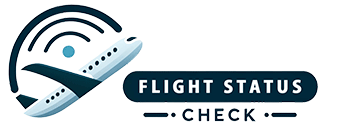Flying can be an exhilarating experience, but it can also be filled with uncertainty and anxiety, especially when it comes to the status of your flight. Whether it’s a business trip, a family vacation, or a quick getaway, knowing the status of your flight is crucial for planning and peace of mind. With the advancements in technology and the ease of accessing information online, keeping tabs on your flight status has never been easier. In this article, we will explore the importance of monitoring your flight status, some interesting facts about flight tracking, and how to ensure a smoother and stress-free flying experience.
First and foremost, why is it important to monitor your flight status? The airline industry is a complex and ever-changing environment, and flights can be delayed, canceled, or rerouted due to a variety of reasons such as weather conditions, mechanical issues, or air traffic congestion. By monitoring your flight status, you can stay ahead of any potential disruptions and make necessary adjustments to your travel plans. For example, if your flight is delayed, you may need to reschedule a connecting flight, rebook a hotel, or notify someone picking you up at the airport. Additionally, being aware of your flight status allows you to make informed decisions about when to leave for the airport, saving you from unnecessary waiting and stress.
Now, let’s dive into some interesting facts about flight tracking. The technology used for tracking flights has evolved significantly over the years. In the early days of aviation, ground-based radar systems were the primary method for monitoring aircraft. However, with the advent of satellite technology and GPS, flight tracking has become much more precise and accessible. Today, there are numerous websites and mobile apps that offer real-time flight tracking, providing detailed information on the location, altitude, speed, and estimated arrival time of a particular flight. Furthermore, some airlines have even implemented Wi-Fi and in-flight entertainment systems that allow passengers to track the progress of their flight while onboard.
So, how can you ensure a smoother and stress-free flying experience when it comes to monitoring your flight status? One of the most effective ways is to utilize the various resources available to you. Most airlines have their own websites and mobile apps that allow you to easily check the status of your flight. Additionally, there are third-party flight tracking websites and apps that aggregate data from multiple sources, providing comprehensive and up-to-date information. Some of these platforms even offer features such as push notifications and alerts for any changes to your flight status. Another tip is to sign up for text or email notifications from the airline, which can keep you informed about any updates or changes to your flight.
In conclusion, staying informed about the status of your flight is essential for a stress-free and enjoyable travel experience. With the abundance of technology and resources available, monitoring your flight status has never been easier. By taking advantage of these tools and staying proactive, you can navigate through any unexpected disruptions and ensure a smooth journey from start to finish. So, the next time you’re gearing up for a trip, remember to keep an eye on your flight status and stay ahead of the game. Happy travels!

Leave a Reply